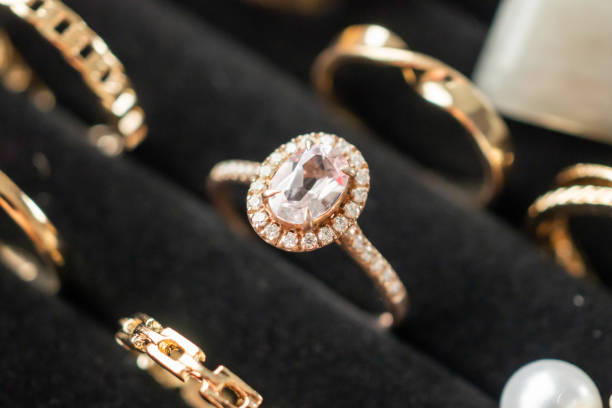Lab Grown Diamonds: Features, Pricing, and What to Consider
Laboratory-created diamonds have emerged as a compelling alternative to natural diamonds, offering identical physical and chemical properties at a fraction of the cost. These diamonds are created in controlled laboratory environments using advanced technology that replicates the natural diamond formation process. As consumer awareness grows, understanding the features, pricing structures, and key considerations becomes essential for making an informed purchasing decision.

The diamond industry has undergone a significant transformation with the introduction of laboratory-created diamonds. These gems possess the same brilliance, hardness, and optical characteristics as their mined counterparts, yet they are produced through human innovation rather than geological processes spanning millions of years. The growing acceptance of these stones reflects changing consumer values that prioritize transparency, sustainability, and value.
How These Diamonds Are Created and Key Features to Consider When Choosing One
Laboratory-created diamonds are manufactured using two primary methods: High Pressure High Temperature (HPHT) and Chemical Vapor Deposition (CVD). The HPHT method mimics the natural conditions deep within the Earth by applying extreme pressure and heat to carbon material. The CVD process involves placing a diamond seed in a chamber filled with carbon-rich gas, which crystallizes onto the seed over several weeks. Both methods produce genuine diamonds with identical crystal structures to natural stones.
When selecting a laboratory-created diamond, several features warrant careful consideration. The four Cs—cut, color, clarity, and carat weight—apply equally to laboratory and natural diamonds. Cut quality determines how well the diamond reflects light, directly affecting its brilliance. Color grades range from colorless to light yellow, with colorless stones commanding higher prices. Clarity refers to the presence of inclusions or blemishes, while carat weight measures size. Additionally, buyers should verify the growth method, as some prefer CVD for its ability to produce higher clarity stones, while others favor HPHT for certain color characteristics.
Pricing Trends for Laboratory-Created Diamonds
The cost of laboratory-created diamonds has decreased substantially over the past decade due to technological advancements and increased production capacity. Currently, these diamonds typically cost 60 to 80 percent less than comparable natural diamonds. A one-carat laboratory-created diamond of excellent quality might range from $800 to $2,000, while a similar natural diamond could cost $4,000 to $8,000 or more.
Pricing varies based on the four Cs, with larger stones and higher quality grades commanding premium prices. Market trends indicate that prices for laboratory-created diamonds continue to decline gradually as production becomes more efficient, though the rate of decrease has slowed compared to earlier years. Seasonal factors and retailer pricing strategies also influence costs.
Prices, rates, or cost estimates mentioned in this article are based on the latest available information but may change over time. Independent research is advised before making financial decisions.
Comparing Laboratory-Created Diamonds to Natural Diamonds and Prices
From a physical and chemical standpoint, laboratory-created diamonds are indistinguishable from natural diamonds without specialized equipment. Both consist of pure carbon atoms arranged in a cubic crystal structure, resulting in identical hardness, refractive index, and thermal conductivity. The primary differences lie in origin, rarity perception, and price.
Natural diamonds form over billions of years under extreme geological conditions, contributing to their traditional status as symbols of rarity and enduring value. Laboratory-created diamonds, produced in weeks, lack this geological history but offer identical beauty and durability. The price differential remains the most significant distinction, with laboratory options providing substantial savings.
| Diamond Type | Provider Example | 1 Carat Cost Estimation | Key Distinction |
|---|---|---|---|
| Laboratory (CVD) | Brilliant Earth | $1,200 - $1,800 | Chemically identical, lower cost |
| Laboratory (HPHT) | James Allen | $1,000 - $1,600 | Faster production, slight color variation |
| Natural Mined | Blue Nile | $4,500 - $7,500 | Geological origin, traditional value |
| Natural Mined | Tiffany & Co. | $8,000 - $12,000 | Premium brand, certified sourcing |
Prices, rates, or cost estimates mentioned in this article are based on the latest available information but may change over time. Independent research is advised before making financial decisions.
Certification and Authenticity Sustainable and Ethical Considerations
Reputable gemological laboratories provide certification for laboratory-created diamonds, just as they do for natural stones. The Gemological Institute of America (GIA), International Gemological Institute (IGI), and other recognized organizations issue grading reports that detail the four Cs and confirm whether a diamond is laboratory-created or natural. These certificates ensure authenticity and provide buyers with confidence in their purchase.
Sustainability represents a significant advantage of laboratory-created diamonds. Traditional diamond mining involves substantial environmental disruption, including habitat destruction, soil erosion, and significant energy consumption. Laboratory-created diamonds require considerably less land disturbance and can be produced using renewable energy sources, reducing their carbon footprint. Ethical considerations also favor laboratory options, as they eliminate concerns about conflict diamonds and exploitative labor practices sometimes associated with mining operations.
Where to Purchase These Diamonds and Making an Informed Choice
Laboratory-created diamonds are available through various channels, including online retailers, traditional jewelry stores, and specialized companies. Online platforms such as Brilliant Earth, James Allen, and Clean Origin offer extensive selections with detailed specifications and competitive pricing. Traditional jewelers increasingly stock laboratory-created options alongside natural diamonds, allowing customers to compare in person.
When making a purchase decision, buyers should prioritize certified stones from reputable sellers, compare prices across multiple vendors, and review return policies carefully. Understanding personal priorities—whether emphasizing budget, size, sustainability, or traditional value—helps guide the selection process. Reading customer reviews and seeking expert consultations can provide additional confidence.
The choice between laboratory-created and natural diamonds ultimately depends on individual values and circumstances. Laboratory-created diamonds offer exceptional value, ethical transparency, and environmental benefits while maintaining the physical beauty and durability that make diamonds desirable. As technology continues to advance and consumer preferences evolve, these diamonds represent a viable and increasingly popular option for engagement rings, jewelry, and investment pieces.




